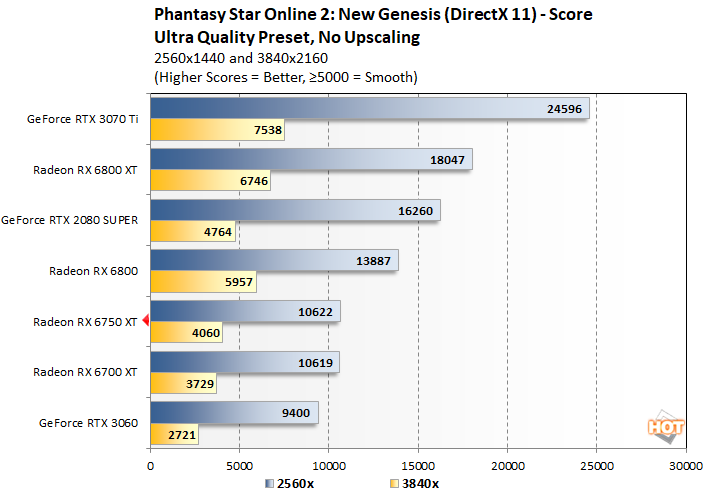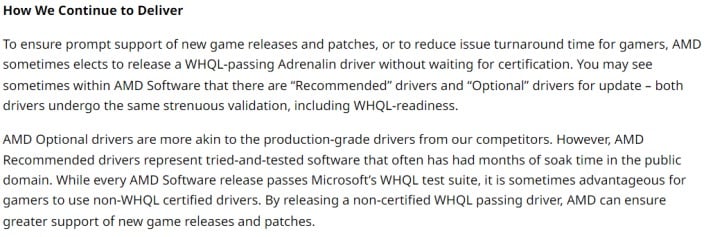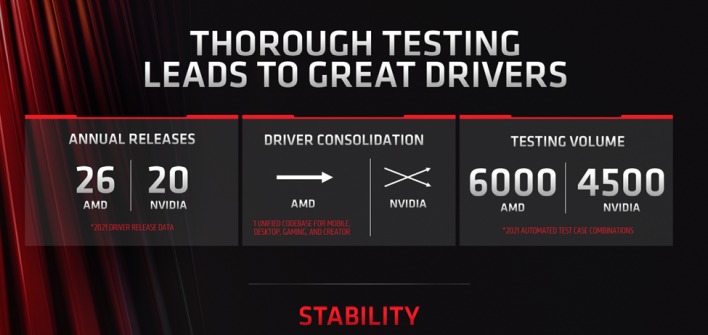You ask PC hardware enthusiasts why they don't have an AMD
graphics card and you'll get a few different answers. Some folks will remark that they wanted
RTX before AMD had its own ray-tracing acceleration. Others will say that they wanted to play
OpenGL games on Windows—historically a weakpoint of the Radeon family. Probably, a fair few will simply say that they ended up with a GeForce card out of happenstance.
You'll also encounter a portion of
PC gamers who actively avoid AMD graphics cards. We haven't done the research to say what percentage of players this applies to, but it's definitely non-zero, and probably in the double digits. If you own a Radeon and everything's right as rain, you're likely wondering, "why would anyone want to avoid these wonderful GPUs?"
The complaint you'll hear bandied about most often is the vague-but-longstanding "bad drivers" remark. The severity of this issue is grossly overstated most of the time, but like most prejudices it's born from a real thing: AMD's graphics drivers have historically not been as consistent or reliable in terms of performance as their lime-hued competitor's software.
AMD knows about this perception, and is going to great lengths to rectify it lately. The red team recently released a DirectX 11 driver that was "rebuilt from the ground up", delivering a 10% performance gain on average, with certain titles—AMD mentions
Assassin's Creed Odyssey and
World of Warcraft: Shadowlands—gaining as much as 30%. That's not the only thing AMD's working on, either; early reports on the company's next OpenGL driver have performance up
by as much as 54%.
Of course, we haven't tested the new drivers ourselves, yet; we're waiting on those OpenGL tweaks before we do. Hopefully they're included in the next mainline update (presumably 22.7.1). AMD would like everyone to know how hard it's working on its drivers, though, and it put up a blog post with some talking points to help dispel the idea that its graphics drivers are sub-par.
Never one to pull its punches, AMD takes direct aim at NVIDIA with the post. It points out that by NVIDIA's own reckoning, AMD released more WHQL-certified drivers in 2021 than NVIDIA did, and that it apparently checks some 1/3 more test cases than NVIDIA. No word on exactly what those test cases are aside from "automated testing on unique system configurations," but it sounds impressive, anyway.
AMD's focus in the blog post is primarily stability. The company claims that it has "industry-leading" stability, and goes on to say that "99.95% of users experience no crashes when AMD Software is installed." That's almost hard to believe as a statistic for Windows PCs in general, but there it is.
The most curious claim in the copy of AMD's blog is the statement that its "optional" drivers are "more akin to the production-grade drivers from our competitors." That's fair enough, if you wanted to say that your "optional" drivers are not "beta" quality as some might assume. However, AMD then goes on to say that its "Recommended drivers represent tried-and-tested software that has had months of soak time in the public domain." Well doesn't that just sound like an old driver?
AMD's slide also says that it has one unified code-base for "mobile, desktop, gaming, and creator," and suggests that NVIDIA does not. Taking a peek at both companies' download pages, we see separate drivers for "PRO" (or "Studio") users, as well as unified drivers for mobile and desktop, so we're not quite clear that this claim holds water, but maybe AMD knows something we don't.
In any case, the point AMD wants to drive home is that it's fixing up its driver foibles, and that "Optional" driver updates are not considered beta quality. You can
head to AMD's blog to read the company's full statements on the matter.




